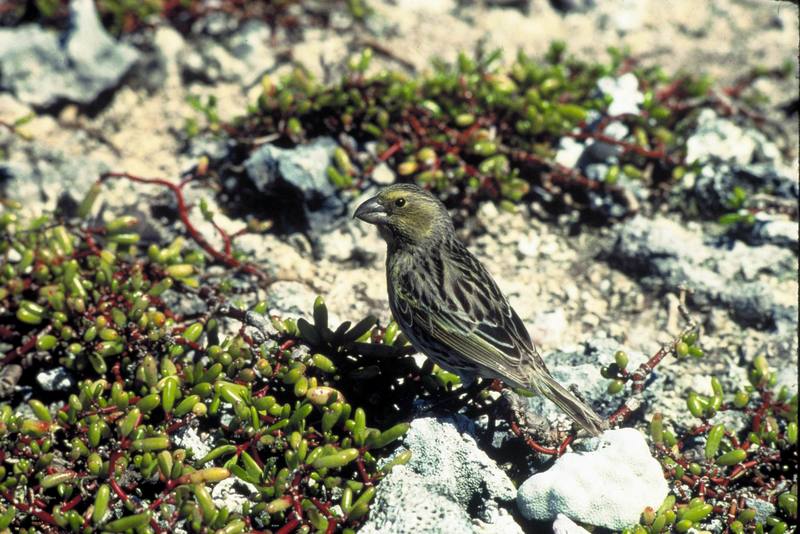|
| Query: Birds | Result: 2224th of 32675 | |
Laysan Finch (Telespiza cantans) <!--레이산되새-->
| Subject: | Laysan Finch (Telespiza cantans)
| | Poster: | Phoby (phoby@hanafos.com)
| |

| Resolution: 2021x1350
File Size: 445913 Bytes
Date: 2005:03:09 16:49:05
Upload Date: 2005:03:09 16:45:54
|
From the U.S. Fish and Wildlife Service's online digital media library.
Check http://images.fws.gov/ for higher quality version.
Metadata
Title: Laysan finch
Alternative Title: Telespiza cantans
Creator: U.S. Fish and Wildlife Service
Source: WO3706-15
Publisher: U.S. Fish and Wildlife Service
Contributor: DIVISION OF PUBLIC AFFAIRS
Language: EN - ENGLISH
Rights: (public domain)
Audience: (general)
Subject: bird, birds, migratory
Date Issued: February 04 2002
Comments
=========
The Laysan finch (Telespiza cantans) is a species of Hawaiian honeycreeper that is endemic to the Northwestern Hawaiian Islands. It is one of four remaining finch-billed Hawaiian honeycreepers and is closely related to the smaller Nihoa finch. The Laysan finch is named after Laysan Island, where it was first discovered. The male Laysan finches have yellow plumage with a whitish belly and a grey neck, while the females are duller with brown streaking. The Laysan finch is a generalist, feeding on seeds, small insects, fruit, carrion, and the eggs of nesting seabirds. It nests in vegetation, laying three eggs in a cup-shaped nest.
Order: Passeriformes > Family: Fringillidae > Subfamily: Carduelinae > Genus: Telespiza > Species: Telespiza cantans |
^o^
Animal Pictures Archive for smart phones
^o^
|
|

